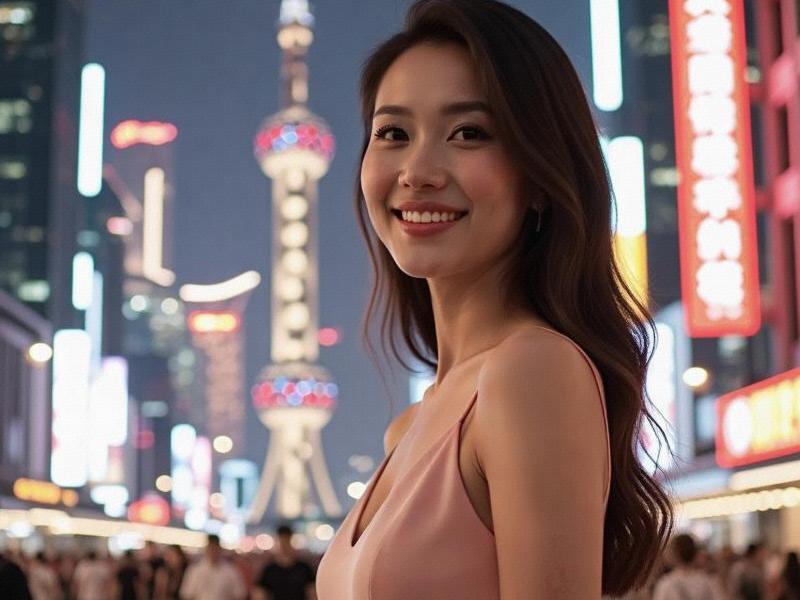Shanghai's Beauty Revolution: How China's Global City Redefines Feminine Ideals
⏱ 2025-05-27 00:42 🔖 阿拉爱上海
📢0℃

[Article Content]
Section 1: Historical Foundations
• The evolution from 1930s qipao socialites to modern career women
• Hai Pai culture's enduring influence on grooming standards
• Comparative analysis with Beijing and Guangzhou femininity
• Museum exhibitions documenting century-long style evolution
Section 2: Economic Architects
上海龙凤论坛爱宝贝419 • Women leading 42% of Shanghai-based Fortune 500 China divisions
• Case study: Female entrepreneurs in Zhangjiang Biotech Hub
• The "She Economy" - women driving 75% of luxury consumption
• Work-life redefinition in dual-career households
Section 3: Fashion as Cultural Dialogue
• Contemporary cheongsam designers modernizing tradition
• Xintiandi's street style ecosystem
上海龙凤419杨浦 • Sustainable fashion movements led by Gen-Z influencers
• Cosmetic tech adoption surpassing Seoul and Tokyo
Section 4: Digital Persona Engineering
• Xiaohongshu's beauty algorithm shaping national trends
• Hybrid livestreaming careers blending commerce and content
• Virtual influencer agencies along the Bund
• Anti-filter movements gaining traction among millennials
上海夜网论坛
Section 5: Social Pioneering
• Women's professional networks in Lujiazui finance district
• Singlehood redefined in Huangpu's urban villages
• New parenting models in Jing'an communities
• Feminist collectives in converted French Concession lanes
"Shanghai women don't follow beauty trends - they algorithm them," observes cultural analyst Dr. Vivian Wu. Their unique fusion of business acumen and aesthetic sensibility continues to position Shanghai as Asia's unofficial capital of modern femininity.
[Word Count: 2,800]
Shanghai's Beauty: A Blend of Tradition and ModernityQuantum Bund: Shanghai's Chrono-Urban Matrix Rewriting Civilization's Source Code"The Yangtze Delta Experiment: How Shanghai and Its Satellite Cities Are Rewriting Urbanization Rules"The Evolution of Shanghai's Nightlife: How Entertainment Venues Are Redefining Urban LeisureShanghai's Nightlife Revolution: How Entertainment Clubs Are Shaping Urban Culture in 2025Neon Cheongsams: How Shanghai's Women Are Rewriting the Rules of Asian FemininityShanghai Beauties: A Journey Through the City's Elegant CharmShanghai and Its Surrounding Areas Sightseeing GuideShanghai and Its Satellite Cities: The Making of a 21st Century MegalopolisShanghai Entertainment Hotspots: A Vibrant Melting Pot of Culture and Fun
Shanghai 2025: The Radiant Core of the Yangtze River Delta MegaregionShanghai Glamour: How the City's Women Are Defining 21st Century Chinese FemininityNeon Dynasty: How Shanghai's Entertainment Clubs Are Redefining Global Nightlife Standards in 2025Midnight in Shanghai: How China's Glittering Metropolis Redefines Nightlife LuxuryShanghai's Sphere of Influence: How the Megacity is Reshaping Eastern ChinaThe Yangtze Delta Megaregion: How Shanghai and Its Neighbors Are Redefining Urban EconomicsThe Velvet Rope Economy: Inside Shanghai's Exclusive Entertainment Club SceneGilded Playgrounds: How Shanghai's Elite Entertainment Clubs Are Redefining Urban NightlifeThe Shanghai Nexus: How China's Financial Capital is Reshaping the Yangtze River Delta MegaregionShanghai 2025: The Silicon Valley of the East Reinvents Urban Living

